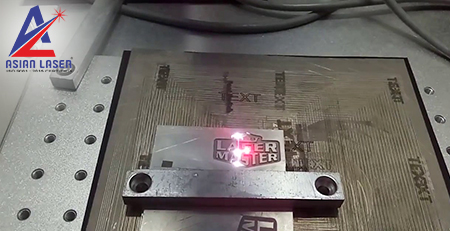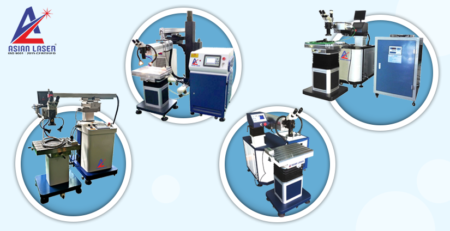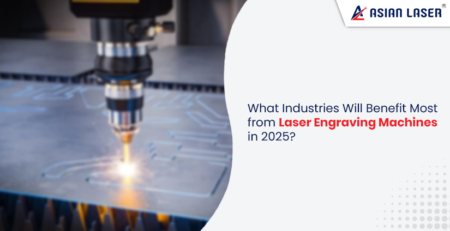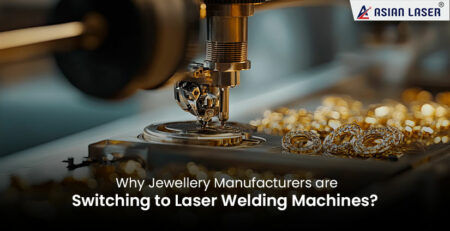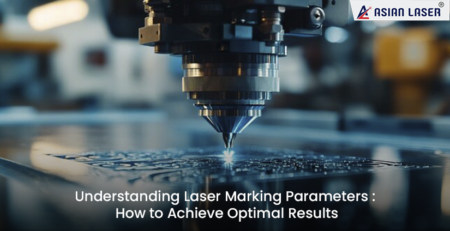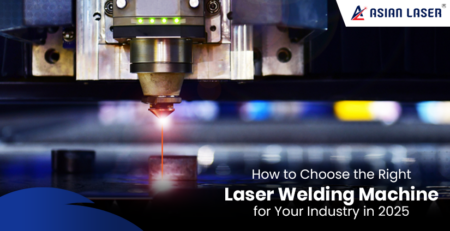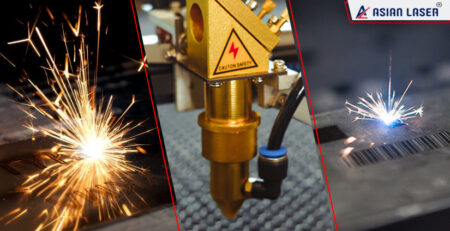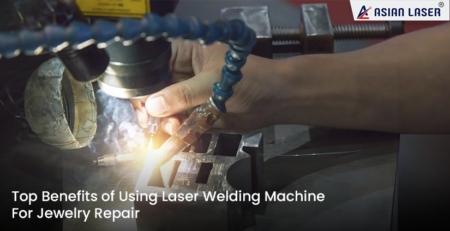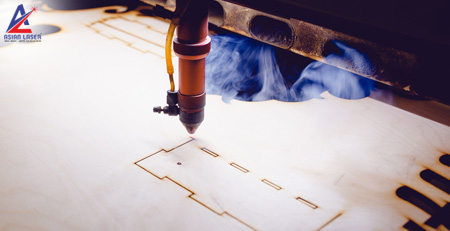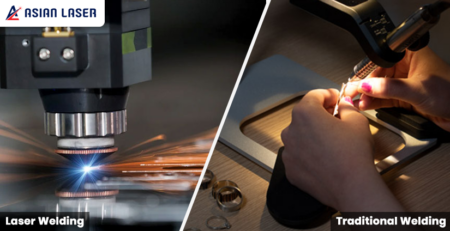Safety and Precision: Advantages of Laser Welding in Jewellery Manufacturing
The jewellery industry is booming. In the ever-evolving landscape of jewellery manufacturing, technological advancements are imperative in shaping the industry’s future.
Laser welding has emerged as a transformative force, offering benefits in terms of safety and precision. It has been famous since the 1970s, but its applications were technically reserved for the medical and aerospace industries. It was in the year 2007 when the MJSA group (Manufacturing Jewelers and Suppliers of America) recognised its potential and efficiency in crafting ornaments at an extensive speed.
From the grand scale of aerospace engineering to the delicate artistry of jewellery making, laser welding has found its way into an impressive array of industries, leaving an incredible mark on jewellery manufacturing processes. Its precision, versatility, and ability to adapt to various materials make it a vital technology, shaping the future of the jewellery industry.
Let’s delve into the main advantages of laser welding in the intricate world of jewellery manufacturing. But before that, let’s know the applications of laser in welding and cutting across various industries.
Application of Laser Welding Machines
Laser welding, once a niche technology, has rapidly become a cornerstone in various industries, revolutionising manufacturing processes with its precision and versatility.
-
Automotive Industry
Laser welding has become integral to the automotive manufacturing process, particularly in producing body components. Its ability to create high-strength, precise welds contributes to improved vehicle structural integrity.
Moreover, laser welding facilitates the welding of dissimilar materials, enhancing design flexibility and reducing overall weight, thereby improving fuel efficiency.
-
Electronics and Microelectronics
Laser welding is crucial in assembling delicate components in the electronics industry, where miniaturisation is a constant goal. The precision and minimal heat-affected zone (HAZ) ensure that sensitive electronic parts are not damaged during welding.
This technology is employed in the production of circuit boards, sensors, and various electronic devices.
-
Aerospace and Aviation
The aerospace industry leverages laser welding to fabricate components that demand strength and lightness.
It is extensively used in producing aircraft structures, engine components, and intricate parts, where precision welds ensure the safety of the final product.
-
Jewellery Manufacturing
Laser welding has revolutionised the jewellery manufacturing process. Its microscopic precision and minimal heat output make it ideal for seamlessly joining delicate components, preserving the integrity of gemstones, and enabling the creation of intricate designs.
Today, a range of laser jewellery welding machines has the best fiber laser beam for fast welding speed, high-quality weld seams, and no consumables.
-
Tool and Die Industry
Laser welding finds application in the repair and modification of tools and dies in the manufacturing sector.
This technology allows for precise welding on worn or damaged tooling, extending the lifespan of these critical components.
Advantages of Laser Welding Machines in Jewellery Manufacturing
-
Microscopic Precision
Laser welding stands out for its ability to provide microscopic precision in the welding process. This is particularly crucial in jewellery manufacturing, where unique designs and delicate components require high accuracy.
The focused and controlled beam of the laser allows artisans to work on small, detailed areas without causing damage to adjacent materials.
-
Minimised Heat Affected Zone (HAZ)
Traditional welding methods often generate significant heat, leading to a larger Heat Affected Zone (HAZ) that can affect the structural integrity of delicate jewellery components. Laser welding, however, produces a minimal HAZ.
The localised and concentrated heat results in less thermal stress on the surrounding areas, preserving the integrity of the jewellery piece.
-
Enhanced Safety for Gemstones
Jewellery often incorporates precious gemstones that are sensitive to heat. Laser welding minimises the risk of damage to these stones, as the process is highly controlled and localised.
The reduced heat transfer ensures that gemstones retain their colour, clarity, and overall quality, eliminating the need for time-consuming and costly stone removal and resetting.
-
Versatility in Material Compatibility
Laser welding exhibits remarkable versatility when working with materials commonly used in jewellery manufacturing, including gold, silver, platinum, and even titanium.
This adaptability allows for seamless integration into diverse production processes, making laser welding a go-to solution for jewellery crafted from different materials.
-
Increased Design Flexibility
The precision offered by laser welding opens up new design possibilities for jewellery artisans. Complex designs that were once challenging to achieve with traditional welding methods are now within reach.
The flexibility provided by laser welding empowers designers to explore novel concepts, leading to more innovative and aesthetically pleasing jewellery.
-
Time and Cost Efficiency
Laser welding streamlines the production process by reducing the need for extensive post-welding cleanup and rework. Also, the precision of the laser beam results in less wastage.
Additionally, the efficiency of the process translates to faster production times, contributing to overall cost savings.
To Conclude:
In the dynamic world of jewellery manufacturing, laser welding is a benchmark of innovation, offering safety, precision, and efficiency. As artisans and manufacturers continue to seek methods that elevate the quality and creativity of their work, laser welding has proven to be a game-changer.
With its ability to preserve the delicate nature of jewellery components and enable intricate designs, laser welding is not just a technological tool; it’s a catalyst for the evolution of craftsmanship in the jewellery industry.
Laser welding is ideal for surface-level alterations, identification, and fast-paced production. In contrast, laser engraving is chosen when a more profound and visually striking effect is required, often for artistic or detailed applications.
To know more about laser welding in the jewellery industry, connect with us today.
FAQ
Q1: What kinds of repairs for jewellery can be made using laser welding?
variety of jewellery repairs can be accomplished by laser welding, such as:
- Resizing rings and bracelets
- Repairing broken chains and clasps
- Reattaching gemstones
- Filling in porosity or imperfections
- Creating custom designs
Q2: Is it safe to use laser welding to make jewellery?
Yes, laser welding is widely regarded as a safe process when applied correctly in the jewellery-making industry. While traditional welding requires intense heat and open flames, this method creates a focused beam of light. Burn risks and fire dangers are decreased as a result of this. That being said, it’s imperative to take safety measures, including using safety goggles and averting direct laser beam contact.
Q3:What effect does laser welding have on the efficiency of production as an entire process?
A: The process of making jewellery speeds up, material waste is decreased, and overall efficiency is increased through laser welding.
Q4: Is there a specific type of jewellery that laser welding works best for?
Laser welding is adjustable and suitable for many kinds of jewellery, including complex and creative designs.
Q5: What are the advantages of laser welding in the jewellery industry?
Laser welding offers numerous advantages over traditional soldering methods:
- Precision: creates highly accurate and controlled welds, ideal for delicate pieces and intricate designs.
- Strength: Produces strong and durable welds, often exceeding the strength of the soldered joint.
- Minimal heat impact: generates little heat, reducing the risk of damaging heat-sensitive gemstones or warping the metal.
- Versatility: Works with various metals and alloys commonly used in jewellery making.
- Cleanliness: No messy flux or solder residue, simplifying the finishing process.
- Faster turnaround times: Welds can be completed quickly and efficiently.


